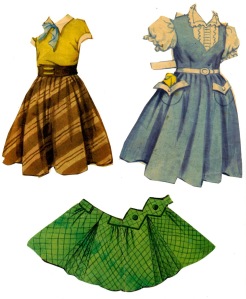In the wake of the Bangladeshi garment factory plaza collapse, which killed over 950 people, I have been struggling with guilt and searching (once again) for alternatives to inexpensive, manufactured-in-Asia goods. As anyone who has bought children’s clothing, books, and toys can attest, it is not easy to find consumer goods manufactured in North America and Europe. I was shocked at the amount of made in China merchandise available in France last year.
Because we are so addicted to cheap and to quantity, it is easy to ignore where our goods come from until a thousand people die making our sneakers and it becomes international news. Sometimes we feel momentary outrage when we read about unsafe lead levels in toys manufactured in China, we send our lead-infused Polly Pocket to the landfill, wash our hands and move on to the next must-have. The consumerist memory is brief, unfortunately.
There is the argument that manufacturing our shoddy, cheap goods is providing jobs for women in countries such as Bangladesh. If we stop buying, many families will go hungry. However, until there is a third way (providing those working in manufacturing with proper wages and safe working conditions, and ensuring that the goods manufactured are safe), we are stuck either supporting inhumane working conditions and endangering our own children or abstaining from purchasing anything manufactured in Southeast Asian countries. In the last few years, I have chosen the last option whenever possible. The large, glaring exception has been baby clothing.
It is very difficult to find inexpensive clothing for kids that has been made in North America. I posted awhile back about the search for shoes. I have since ordered a couple pairs from Soft Star Shoes and can attest to their all-round awesomeness. I have also purchased some Robeez lookalikes from Lil Jo’s that are made in Vancouver and are very cute.
Recycling is a good way to keep clothing costs down (beware of used footwear though). I happily accept any and all used clothing that people are willing to give Ladybug. While much of what we get is made in Bangladesh and China, we are not contributing any new funds to the manufacturing world. Plus, we are helping to reuse clothing before it ends up in the landfill. Lately, however, we have begun to exhaust some of our clothing suppliers because our mighty Ladybug is gaining on their children. Plus, it is nice to get something new once in a while. To further complicate life, distribution in the off-line world is often a bit spotty for made in North America clothing but the Internet is your friend in this instance. There is always the American Apparel at your local shopping complex but that store’s owner has a past that may be unethical and one that is most definitely murky.
The North American made kids’ clothing companies below manufacture beautiful, quality goods that come with a reasonable price tag. Part of the whole shift in our thinking needs to be a reduction in quantity – does my 1.5 year old really need 10 dresses? – in favour of quality.
Boské Kids
Small Potatoes
Redfish Kids
Red Thread
Stella Industries
Mini Mioche
This list is by no means exhaustive. I have also discovered lovely handmade goods at local seniors’ centres, and farmer’s markets. I can easily spend hours in the children’s clothing section of Etsy.
What are some of your favourite children’s clothing companies?  Paper Doll by ana_ng via Flickr
Paper Doll by ana_ng via Flickr
April 4, 2014 at 08:47
I also purchase used clothing for my kids. I’ve pulled out my sewing machine again and am trying to bring life back into clothes. Converting my t-shirts into dresses for my daughter, making leggings out of sweater sleeves. The problem at hand is really big (understatement) but I try and do my part for non-consumerism. One legging at a time.
Besos, Sarah
Blogger at Journeys of The Zoo
April 4, 2014 at 10:32
Great tips, Sarah!
It has been good to see some discussion about creating government policy around ethical sourcing, too (see: Ontario, and Maine). Hopefully, things are changing (albeit a bit slow for my taste).
May 12, 2013 at 03:24
So hard to find reasonably priced clothing does not contribute to poor working conditions…I love going to thrift stores where I’ve found almost new clothing for a dollar or two. Preloved has also started a collection for children- it’s great as they make their clothes from recycled clothing. There is also a Toronto brand called Sorad- they make very cute stuff that is comfortable and practical. Of course the clothing is not cheap but hey, you get what you pay for. I find it worthwhile to spend the money on items they will wear frequently (jackets, hats etc) and look for other items second hand. Toronto has also started an online clothing swap where you “donate” your clothes and receive credits to purchase other’s used clothes. The items are reasonably priced and you get something back for what you give! See http://www.babeandbelly.com (blog) for a review. I
belive it’s called “perfect threads”
May 12, 2013 at 07:31
Thanks, Lesley. These are all great ideas. I especially like the online clothing swap idea.